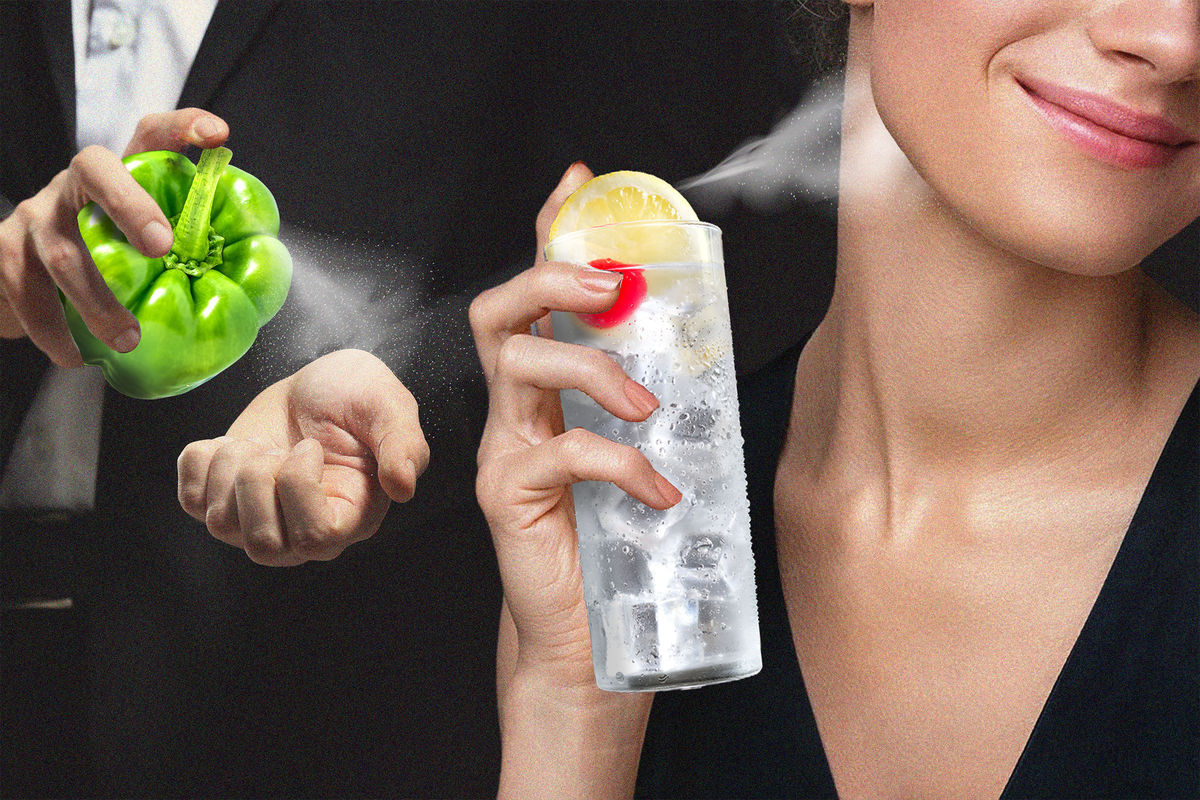In March, indie perfume brand D.S. & Durga launched an eau de parfum called Bistro Waters, inspired by ’90s-era restaurants in NYC. There’s a base of basil, nutmeg, and moss water, with a heart of mandarin, green pepper, and pea flower, finished off with top notes of lime flower, coriander seed, and pear. The perfume is light and crisp, but decidedly savory, too.
“This is a snapshot of a 90s-00s NY Bistro when tourists ordered peartinis, veggies got fancy, and people wore fresh aquatic fumes,” D.S. & Durga co-founder David Seth Moltz writes in the perfume’s liner notes.
The team confirmed that the name of their new perfume is a nod to a recent GQ trend story about what writer Jason Diamond (who has written for Eater in the past) calls Bistro Vibes. “Spago, Wolfgang Puck’s iconic Beverly Hills restaurant — in its ‘80s and ‘90s heyday — is the spiritual center of Bistro Vibes. It’s the clothes, the sounds, and the overall vibe. It’s not just about the restaurant’s dated-but-elevated food, or about the genial, mass-culture version of celebrity that thrived there,” Diamond writes. “It’s also about the clothes famous people wore to places like Spago, and about the way that they wore them.”
Diamond here is referencing a specific iconic Los Angeles spot, but the same could be applied to the swagger of the larger restaurant scene during the time — and it’s this very zeitgeist the scent hopes to embolden wearers to feel. D.S. & Durga co-founders Moltz and Kavi Ahuja Moltz told Eater that they actually ignited their relationship at one of the more notorious restaurants to open on the heels of this time period: Moltz was a server at Pure Food & Wine, the celebrity-packed raw food restaurant that is the subject of a new Netflix crime docuseries, where he first met Ahuja Moltz, then a customer.
Food-themed perfumes are by no means new. Years ago, Virginia’s Pork Barrel BBQ put out a fragrance inspired by the smoky redolence of its meat rubbings. In 2012, Pizza Hut debuted its own fragrance, seemingly for rabid fans looking to keep the waft of dough and tomato sauce lingering on their bodies long after they finished a slice. Scents like these are in some ways extensions of other kitschy food-scent experiences popularized in the 1990s and early aughts and marketed to young people — like fragrant markers and scratch-and-sniff stickers. A decade later, though, perfumers are putting out their own culinary-inspired scents across the luxury sector, with some bottles priced upward of $200.
New Jersey-based olfactory studio CB I nHate Perfume released Here Piggy, infused with the scent of white truffles. In San Francisco, the perfume shop Ministry of Scent has a whole section dedicated to gourmand scents, including Laromatica’s interpretation of kulfi. Meanwhile Le Labo has a fragrance meant to evoke matcha. D.S. & Durga, for its part, has long looked to offbeat ingredients for inspiration. In 2019, it released a scented candle that turns the smells of coffee and almond croissants into a luxurious home accessory — an elevated Yankee Candle, if you will — and its pistachio fragrance immediately sold out when it launched earlier this year.
These perfumes aren’t gimmicks. Rather, they reflect the ever-expanding role of food in wider culture. Increasingly, food is fashion. You can wear a sequined designer purse shaped like a hamburger or a $300 T-shirt emblazoned with an image of a popular cookbook. And now you can smell like your favorite Indian dessert or even your memory of a ’90s-era restaurant.
Technology is catching up to match the growing desire for experimental scents like the ones D.S. & Durga is making. Perfume designers will often use what’s called an accord — multiple scent notes mixed together — to create the smell of a hard-to-estimate ingredient. Previously, it wasn’t possible for perfumers to simply press a fruit and turn it into its distilled oil version. But the scent world is changing to allow for more infusions of culinary ingredients. “The green pepper extract was just released last year using new biotechnology,” says Moltz, of the recently patented process he used for Bistro Waters. He adds that it has the potential to inspire more “gourmand” scents in the future.
There’s an inextricable connection between flavor and scent. Neuroscientists have long studied the connection between smell and memory, but taste plays an important role as well. “[Food molecules during chewing] make their way back retro-nasally to your nasal epithelium,” writes Harvard’s Venkatesh Murthy, chair of the Department of Molecular and Cellular Biology, in the Harvard Gazette. More simply put, he adds, “All of what you consider flavor is smell. When you are eating all the beautiful, complicated flavors … they are all smell.” And so it’s only fitting that perfumers would aim to bottle flavor.
Recreating past restaurant memories via perfume also seems especially ripe in the era of COVID-19 in which retaining smell, and thereby taste nuance, is in some ways a privilege. But if culinary-inspired perfumes become a full-blown trend, it will be thanks to scents like Bistro Waters. “We don’t follow perfume trends, I just like to be influenced by things outside of the perfume world and look to other influences like restaurants,” says Moltz, on why he found himself attracted to food scents. “Much like painters try and capture a moment with their brushes, I’m just trying to do that with aroma.” Right now, it seems, the moment is about food.
Source: Apparently, Foods Scents Are a Growing Trend in Luxury Perfumes













